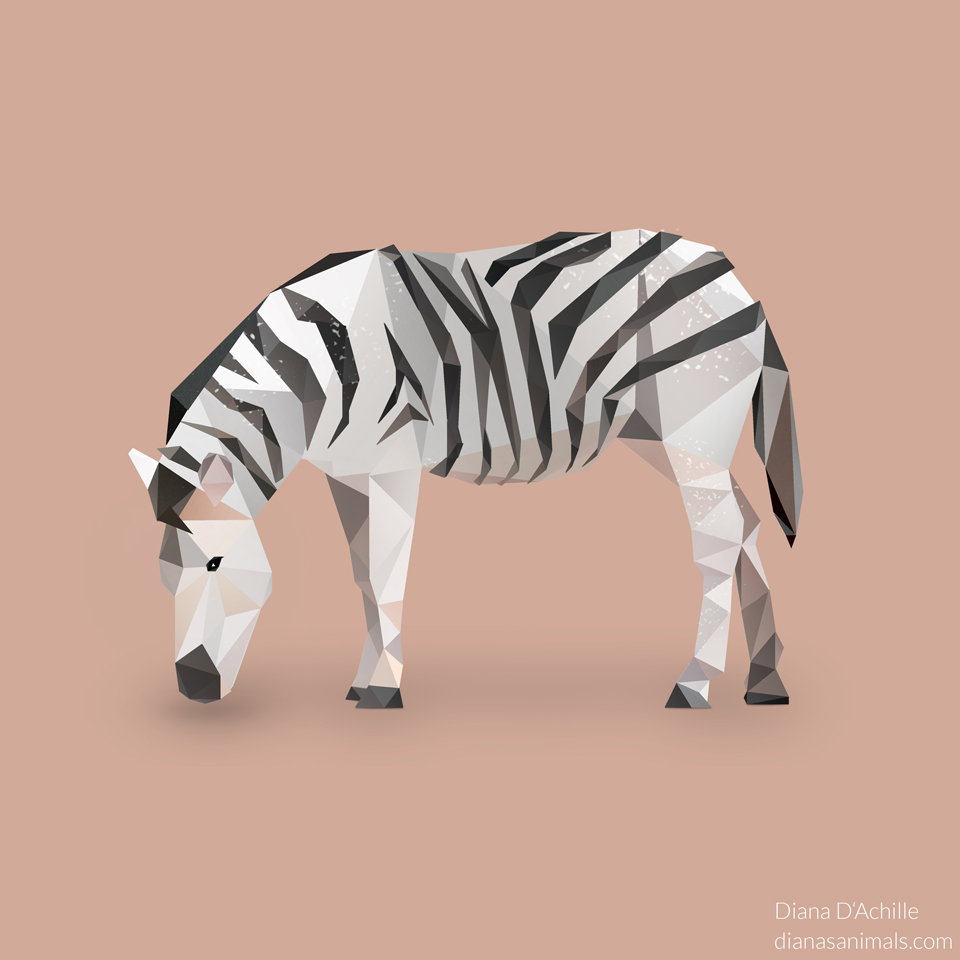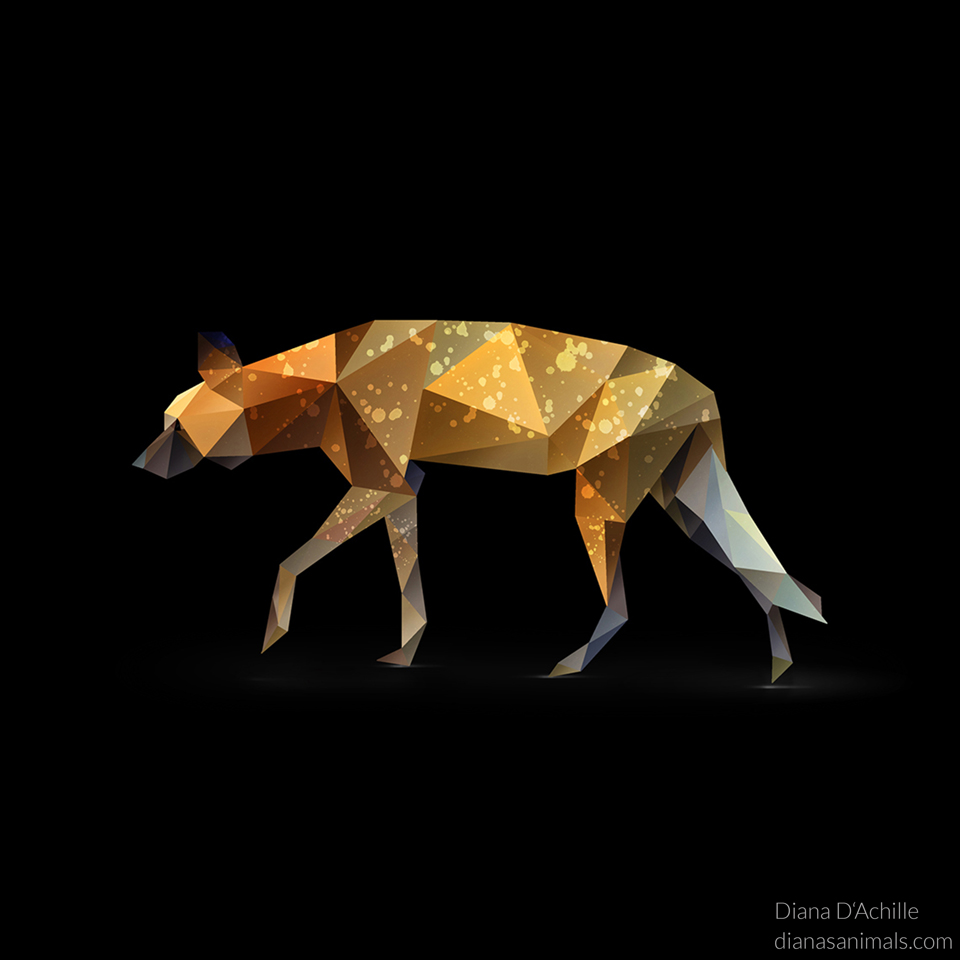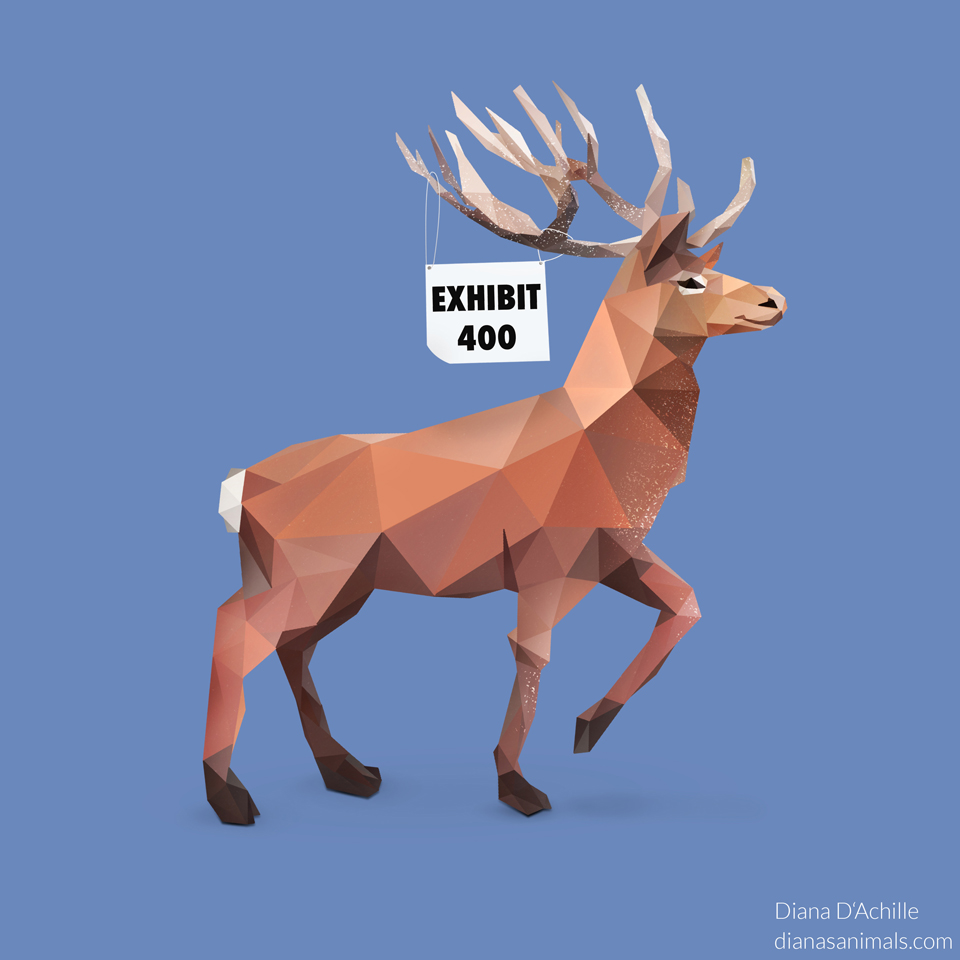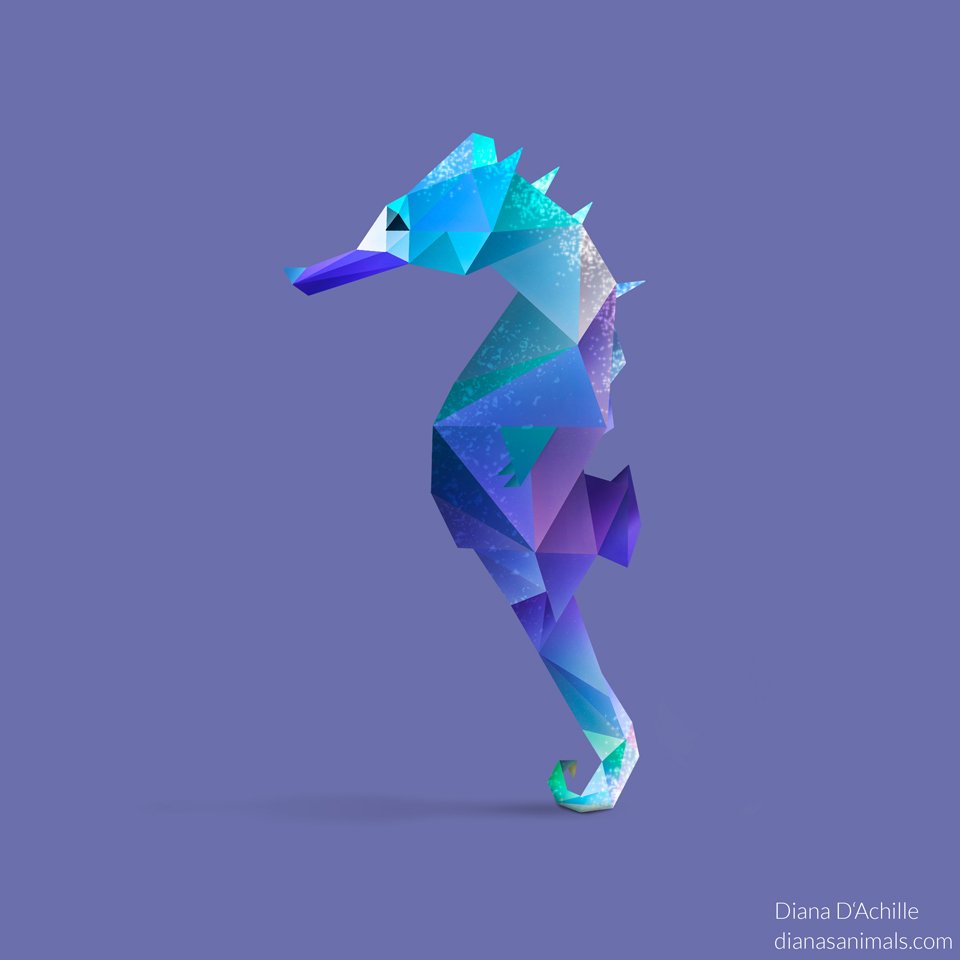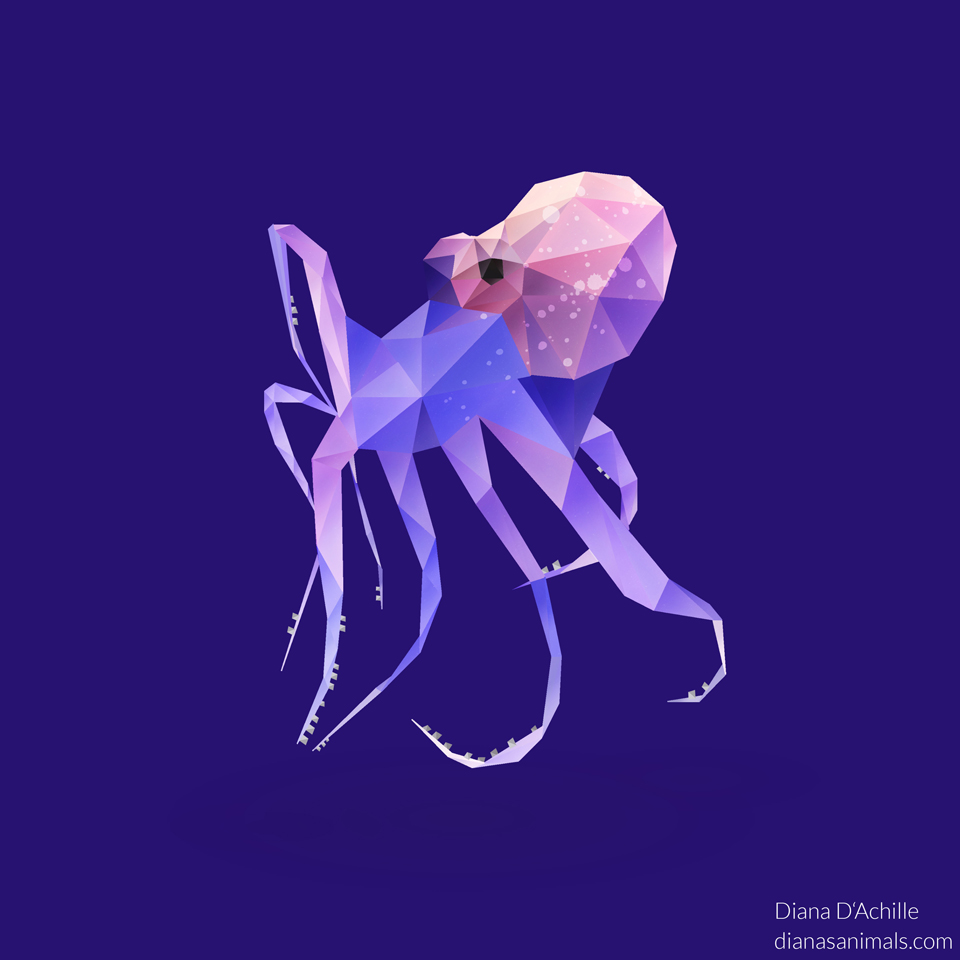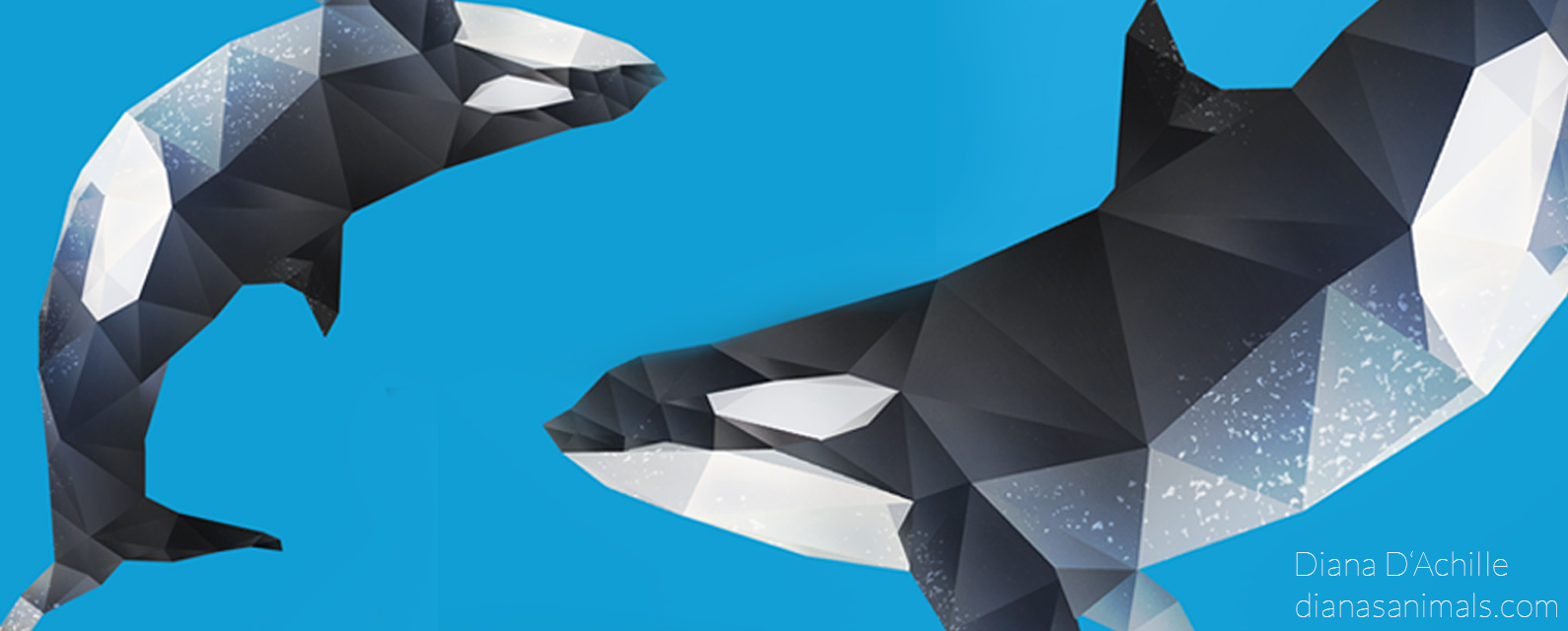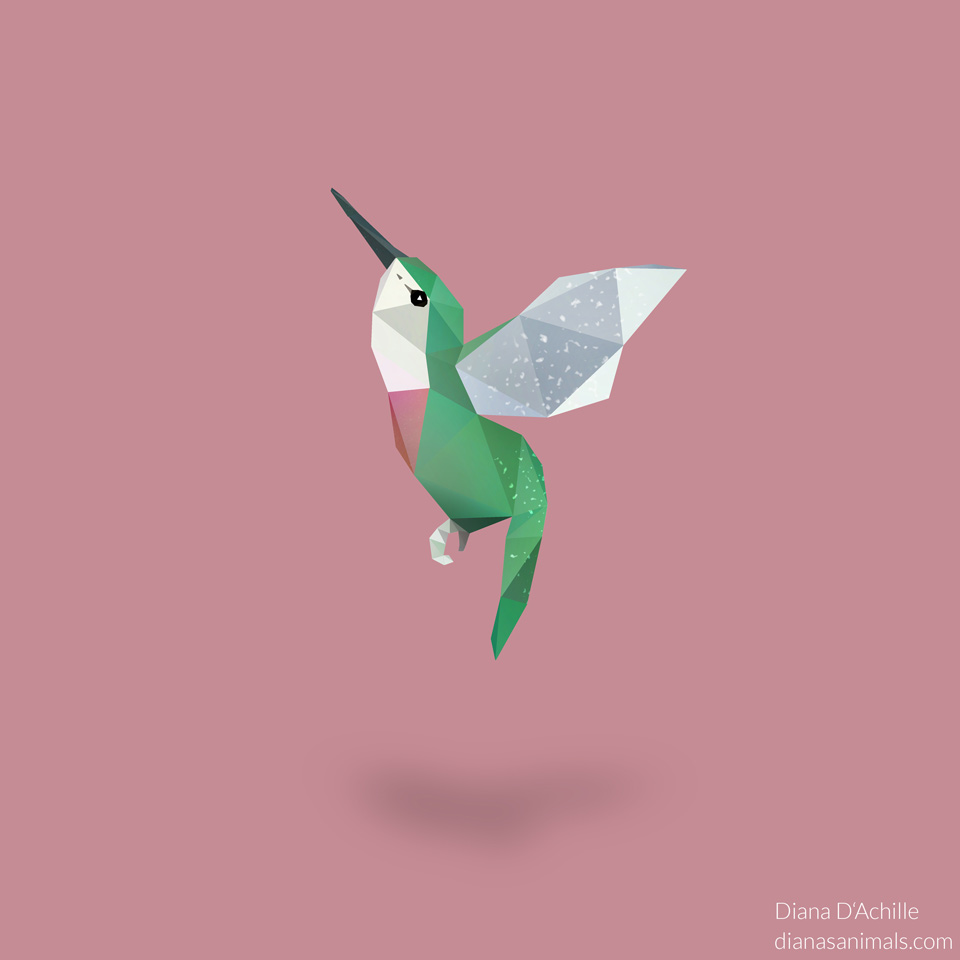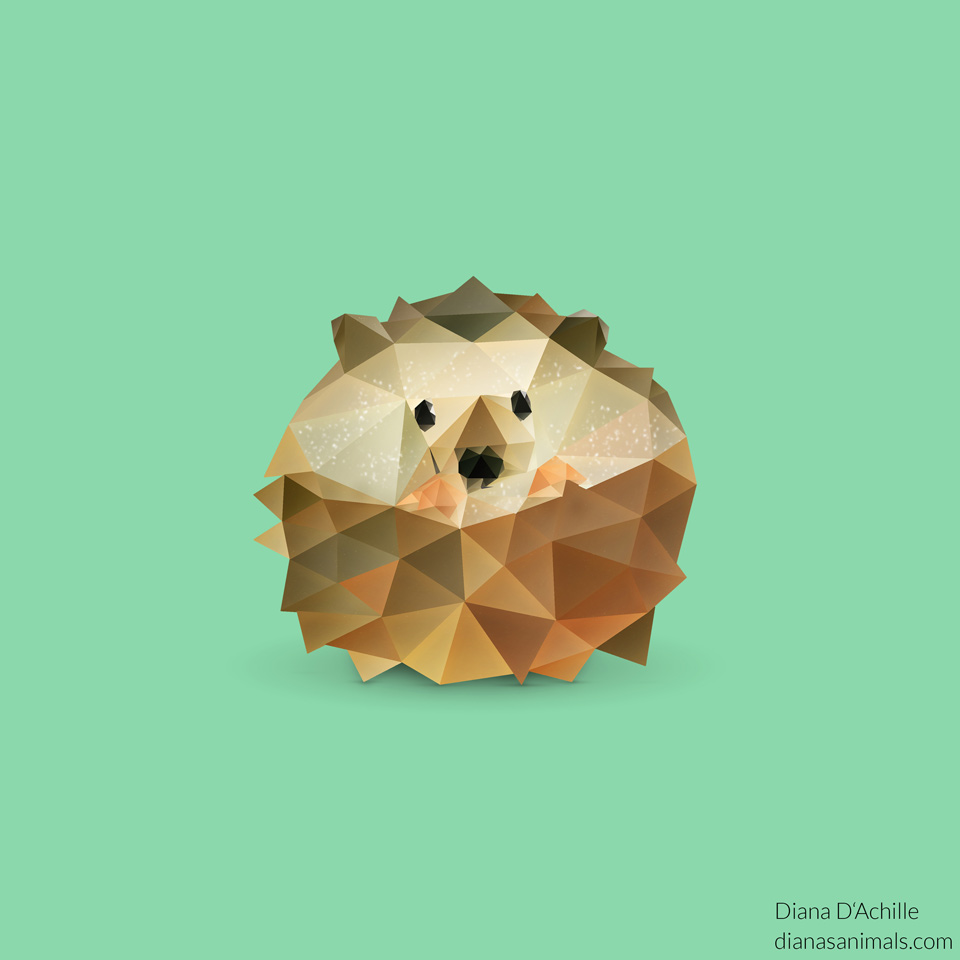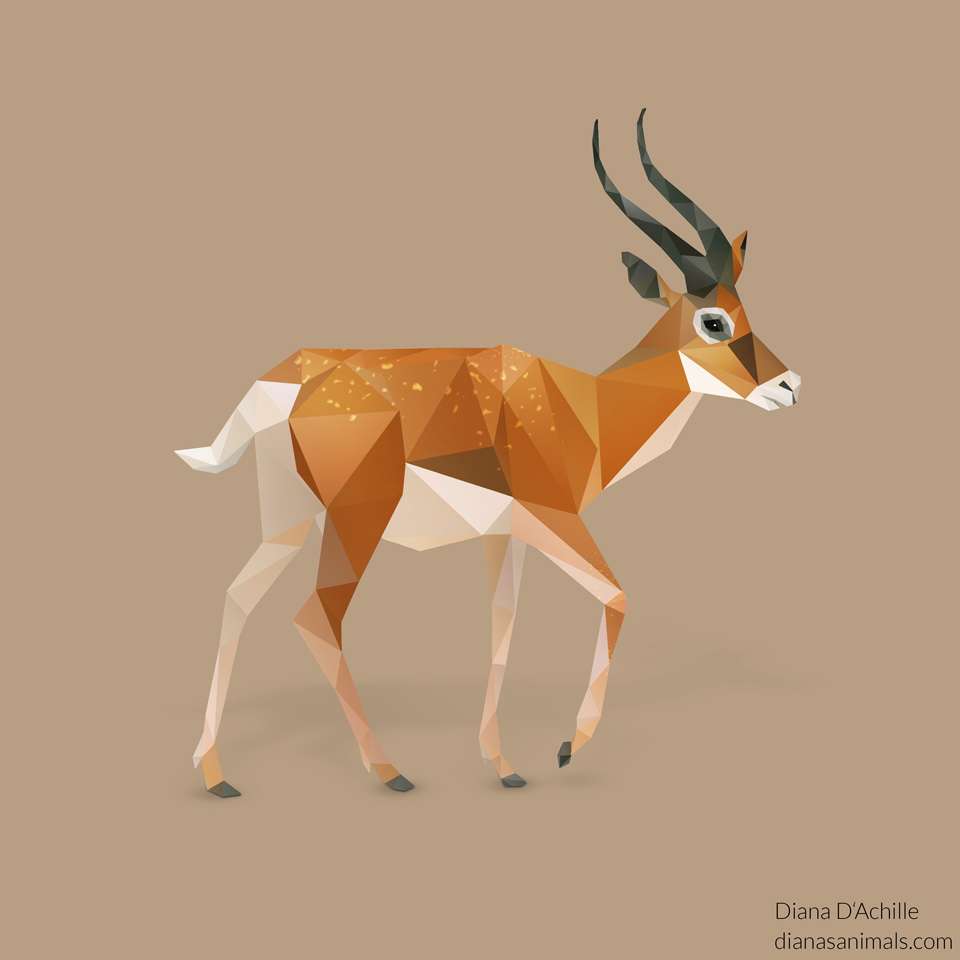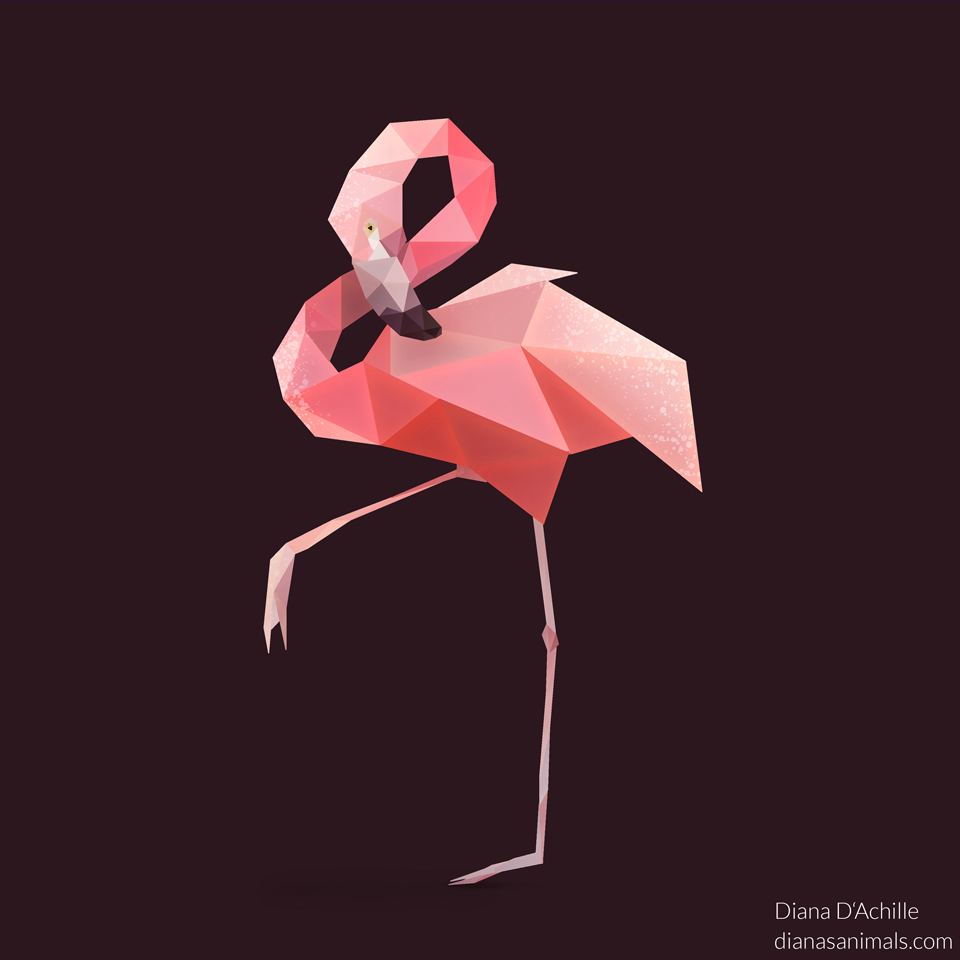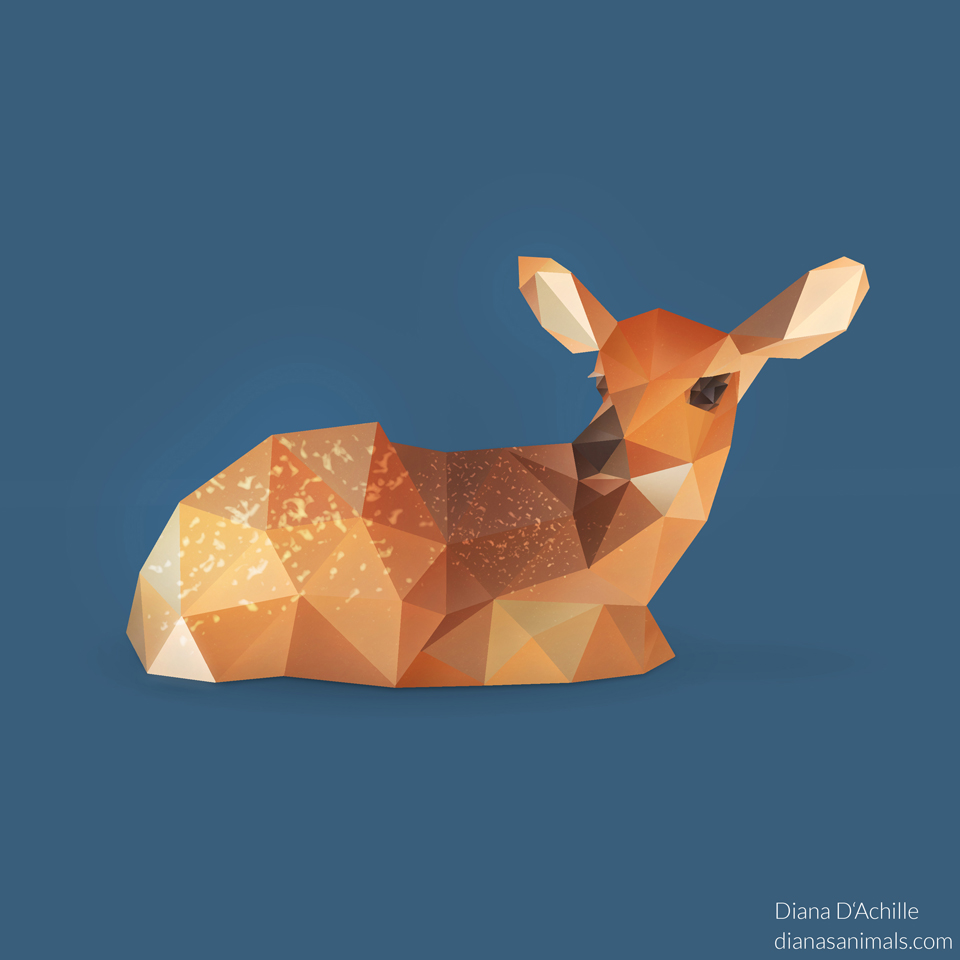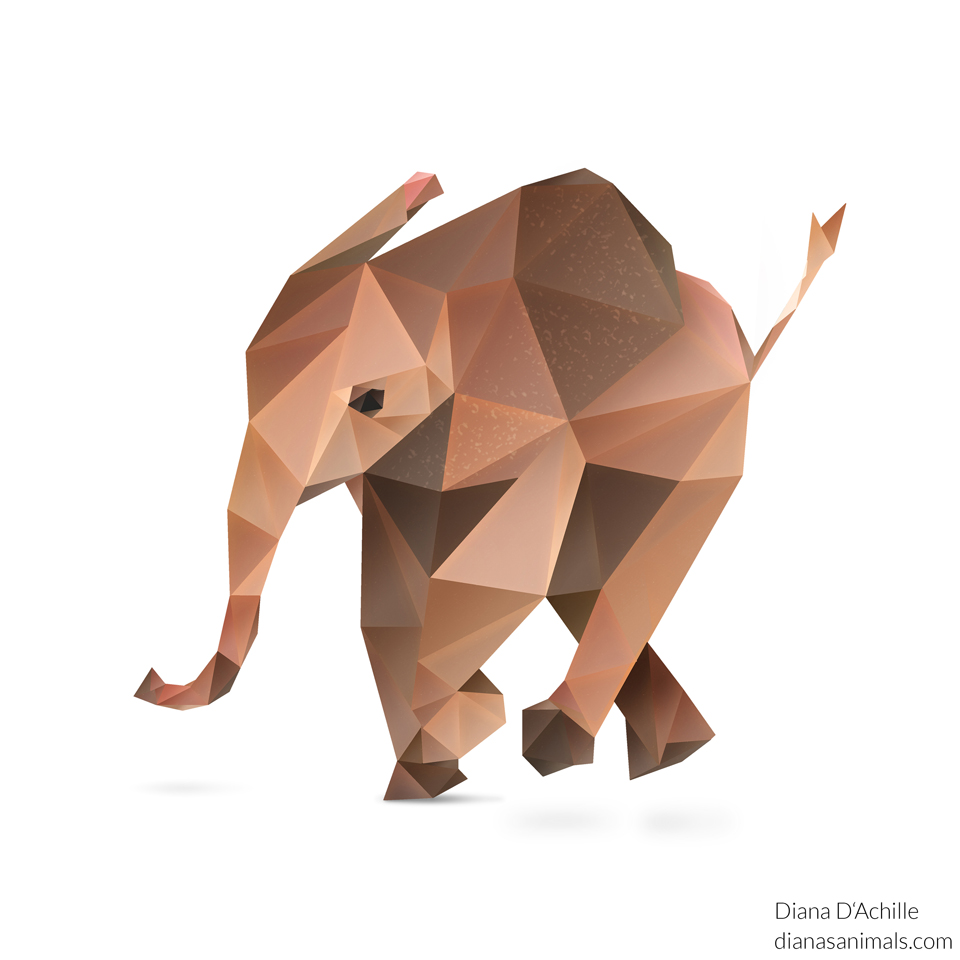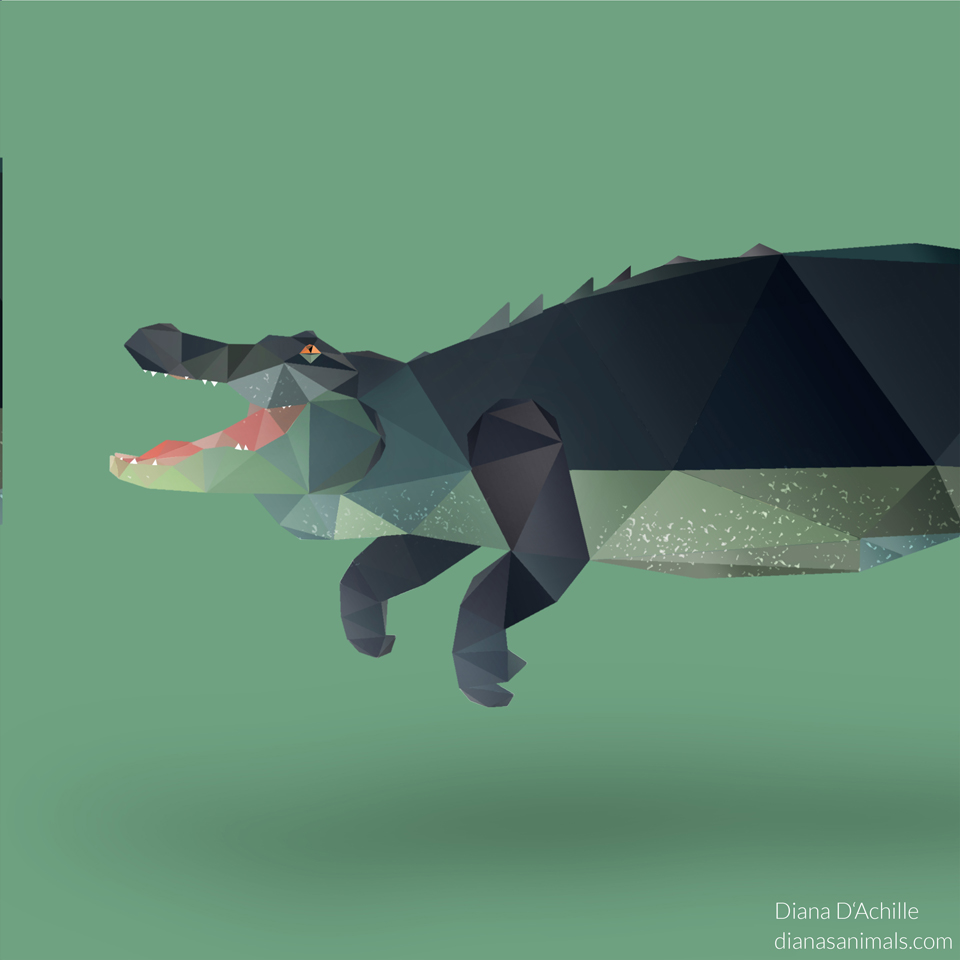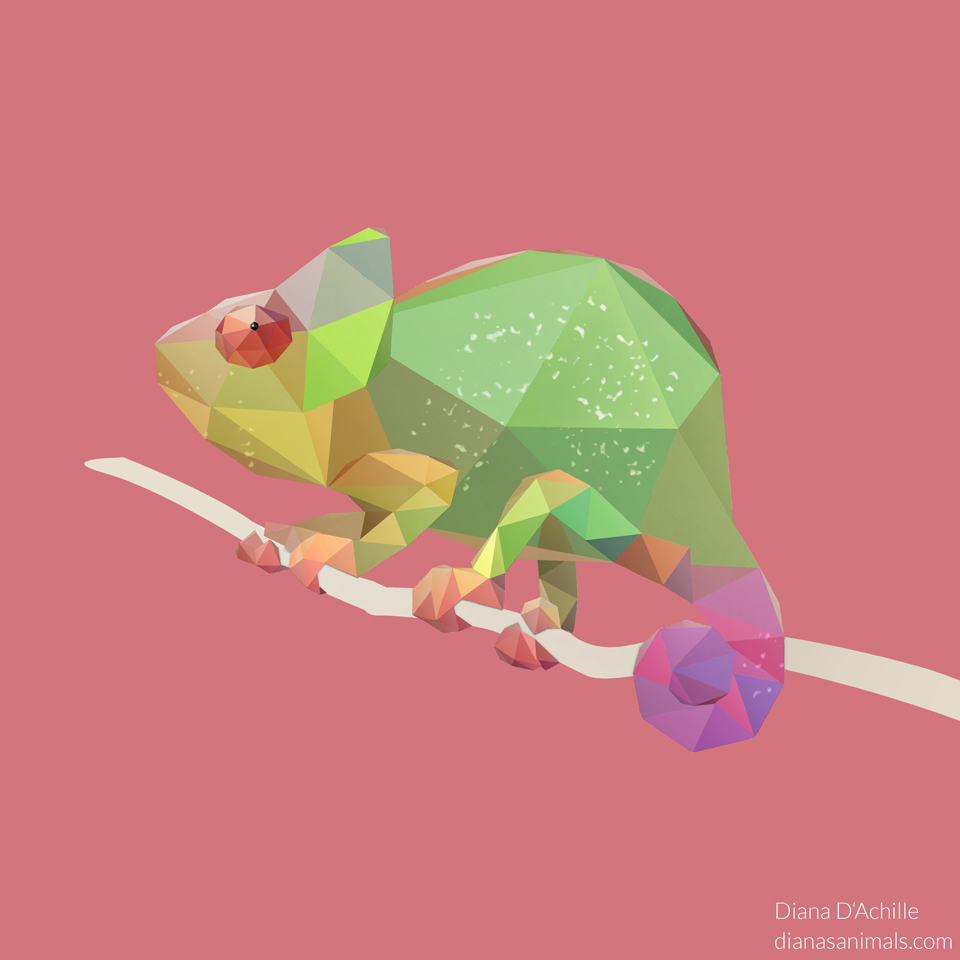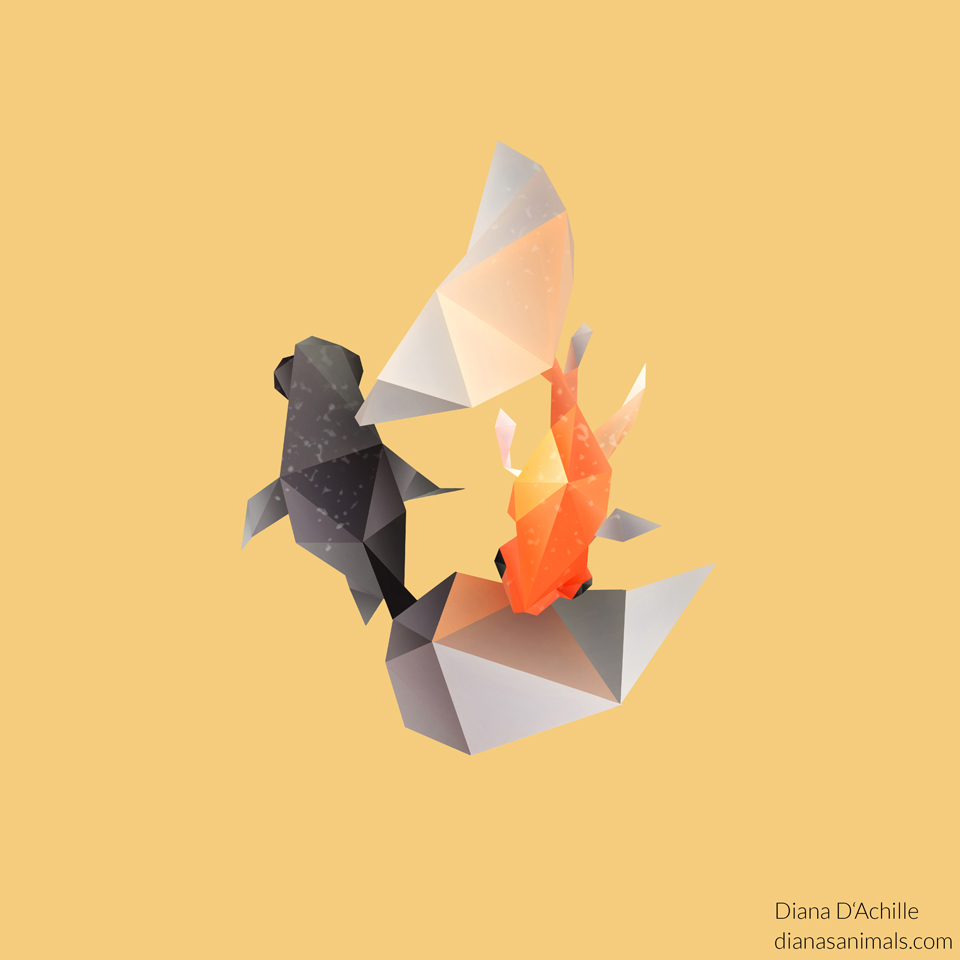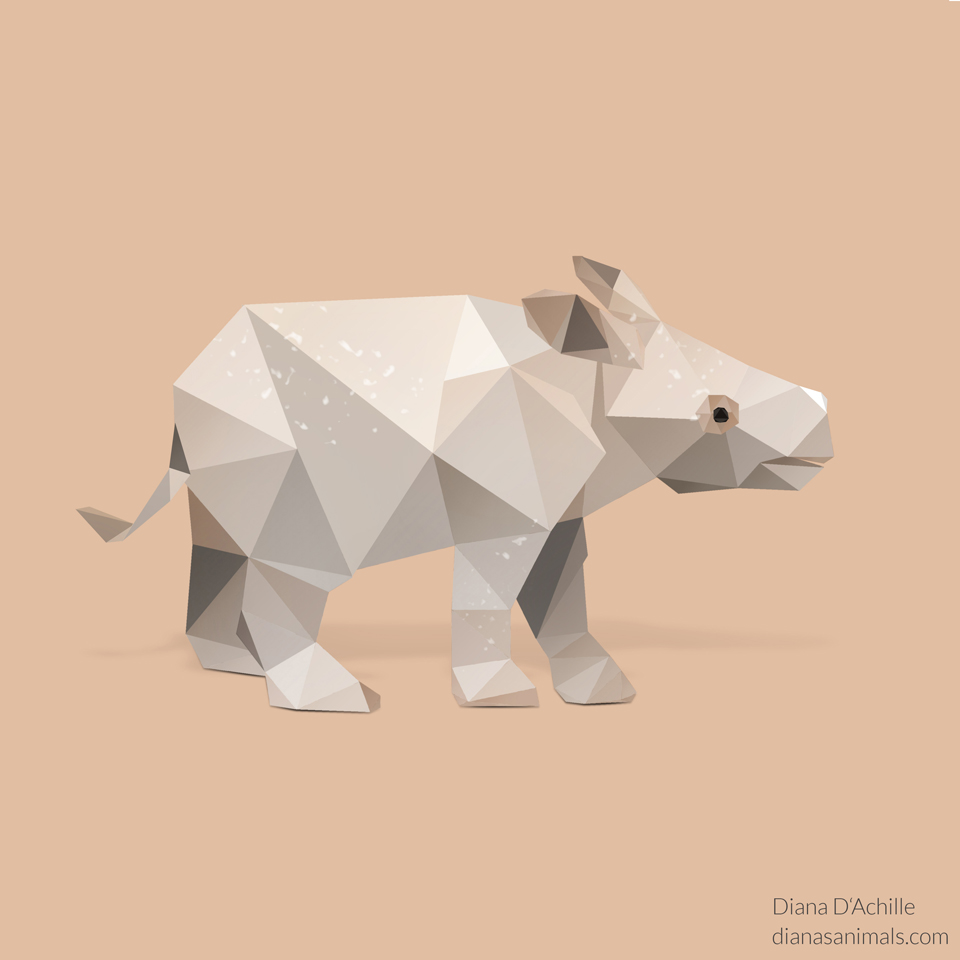If you’re here on this page reading about animals, chances are you’re rather familiar with what they look like. We all know the generalities—elephants are huge, sharks are sleek, and hedgehogs spiky. But apart from that, have you ever stopped to consider the specific outline of your favourite critter? Well Diana D’Achille has.
Born and raised in Denville, New Jersey, the visual web designer consultant for Verizon spends her spare time ‘staying active, reading tech articles and designing low polygon animals.’ Examining the shape and structure of some nature’s most well-known creatures, Diana then recreates their form onscreen via a brilliant mash-up of tech, art, and animal life.
We caught up with Diana to ask her a little bit more about the low poly world of the wild.
Hi Diana—what’s with the polygon animals?
The combination of mixing art with technology has always fascinated me. My low polygon animals combine my love for animals, technology, and my passion for design. When my low polygon animals started to take on a personality of their own, I became hooked.
They look awesome. Could you please explain the process of how they’re made?
First I’ll start with a sketch of the animal on paper. I will usually reference several images of the animal to combine the best of its features. I strive to bring as much personality as I can. Most of my inspiration is found watching Discovery Channel, surfing online wildlife photography and skimming through National Geographic magazines.
Knowing a little about the animals is always a plus. After my sketch is complete I will then bring it into Illustrator to vector. (Shown below) It’s important to understand the anatomy of the animal during this step. I’ll then bring the vector into Photoshop where I’ll color and add textures to the animal. Hooray Beluga Whale.

How many animals have you created now?
Right now I have completed 55 animals. The goal of the collection is to expand to 400 species. Only 340+ to go. My animals and I always like to think we are only half a glass exhibit full.
Any insects in there?
Right now my collection is only made up of animals. Unfortunately, you will not see dinosaurs, insects, or mystical creatures. Although, this is something I would consider in the future. For now I am content with my collection focusing on animals.
How long have you spent constructing this portfolio of animal life?
I started back in May 2015. There’s no deadline for this collection, it’s just something I like to do for fun. I crave eye-catching designs. I spend hours everyday, but when you enjoy something it is not ‘work’. Putting together the portfolio was the easy part.
What creatures have been the hardest to design?
The more detailed sketches can create some challenges, but I don’t mind because it just pushes me to overcome these challenges and learn from them.
Which do you prefer, land creatures or sea dwellers?
I am fascinated by all living creatures. Although, after becoming Open Water Scuba Diving certified two years ago I have developed a love for sea animals. There is an amazing world of creatures in the oceans waters. I have scuba dived in Turks and Caicos, and Cozumel, Mexico and was in awe with both dive locations. Seeing a variety of fish, sharks, and turtles living in their environment was truly a fascinating experience. I found my underwater adventures to be absolutely beautiful, something I wish everyone could get to experience at least once in their life.
What is it about natural wildlife that has made them the focus of your art?
My mom recognised my love for nature from a very early age. I have always been the outdoorsy type. Growing up as a kid I would be the one outside digging for worms in our backyard or watching frogs until they caught their prey in our manmade pond. I have a alphabet book that I made when I was about nine-years-old. My mom encouraged me to draw a different animal for every letter of the alphabet. I wrote a sentence or two about each animal under each drawing. I still have this book, so it’s pretty neat to look back on. Creating these animals into this low polygon style is my ongoing appreciation for these magnificent creatures.
What animals are you planning on making next?
I am not sure what is to come next, but be sure to follow me to find out.
Lastly, if you had to put together a Pokemon squad out of these guys, which would you pick?
The Pokemon squad would definitely be a team effort between the squirrel, chameleon, and great white.
Thanks Diana.
If you’d like to see more of Diana’s work, then her website dianasanimals.com is the place to head. Or check her out on Facebook and Instagram too.
–
More Tech on Love Nature
Doggie detectives: How canines are becoming the new conservation superstar
Eyes in the sky: The incredible technology helping save Asia’s wildlife
The ingenious technology being used to prevent wildlife roadkill

